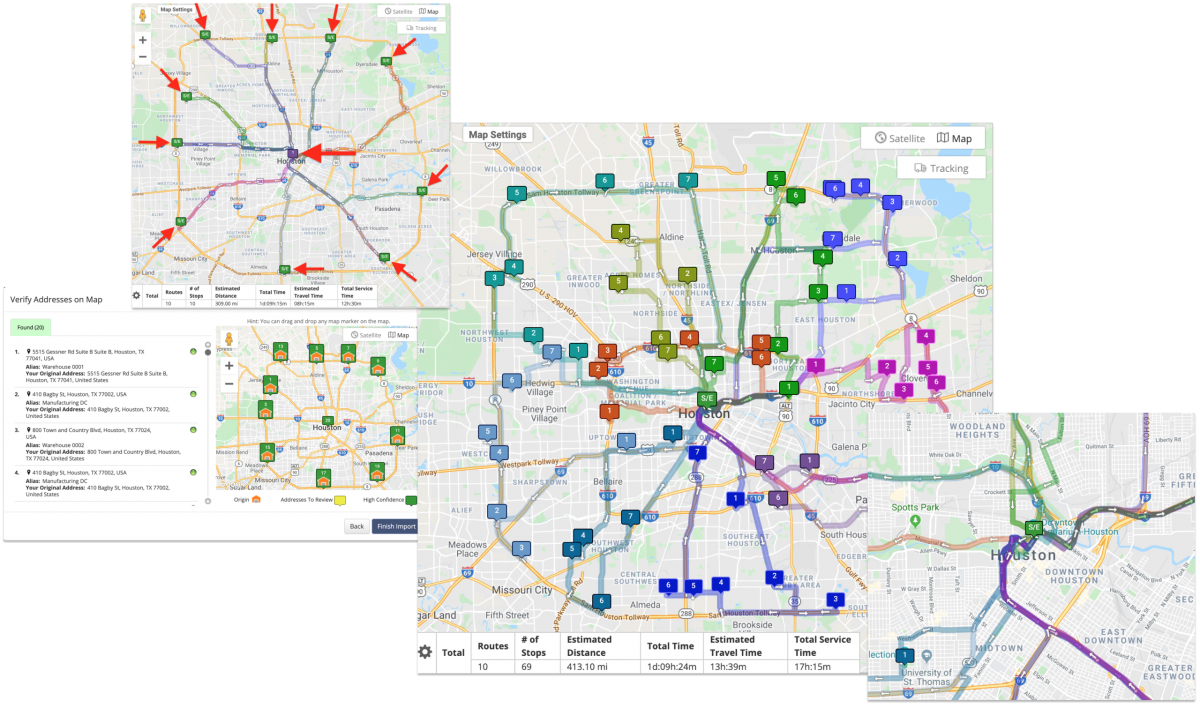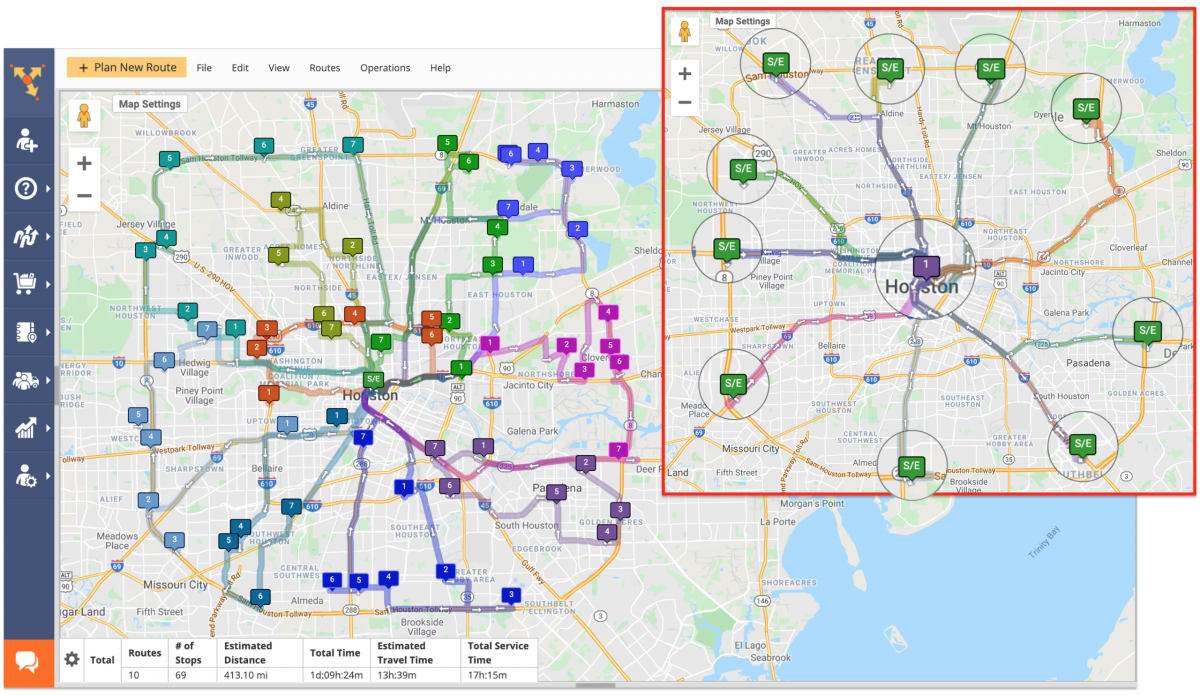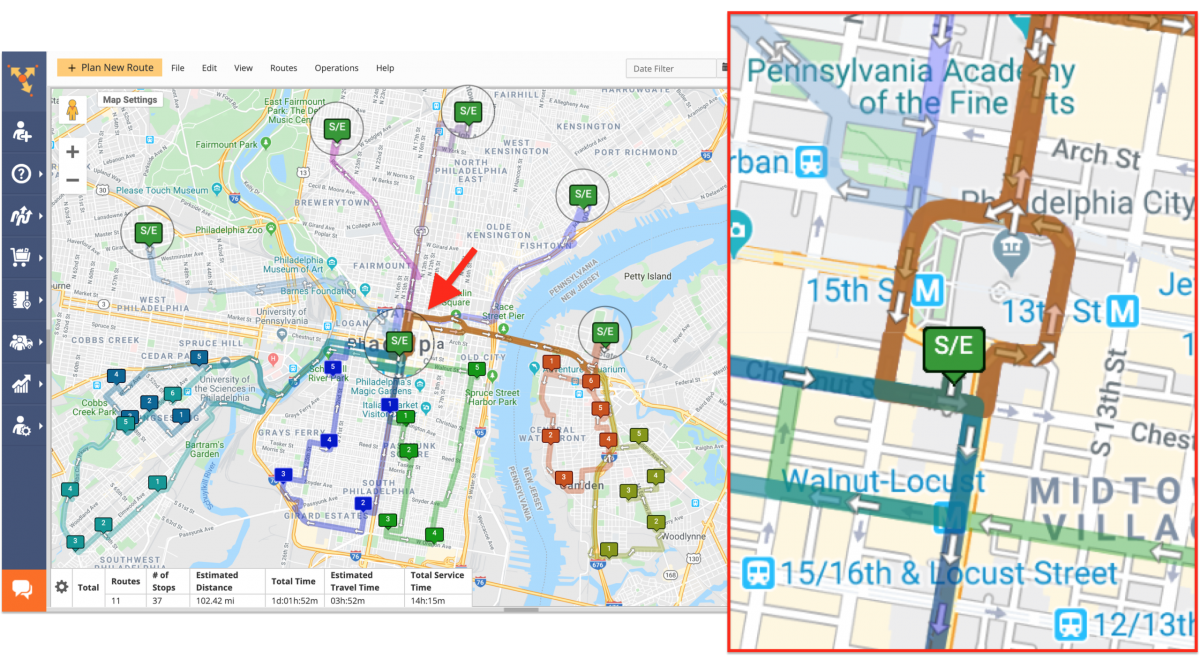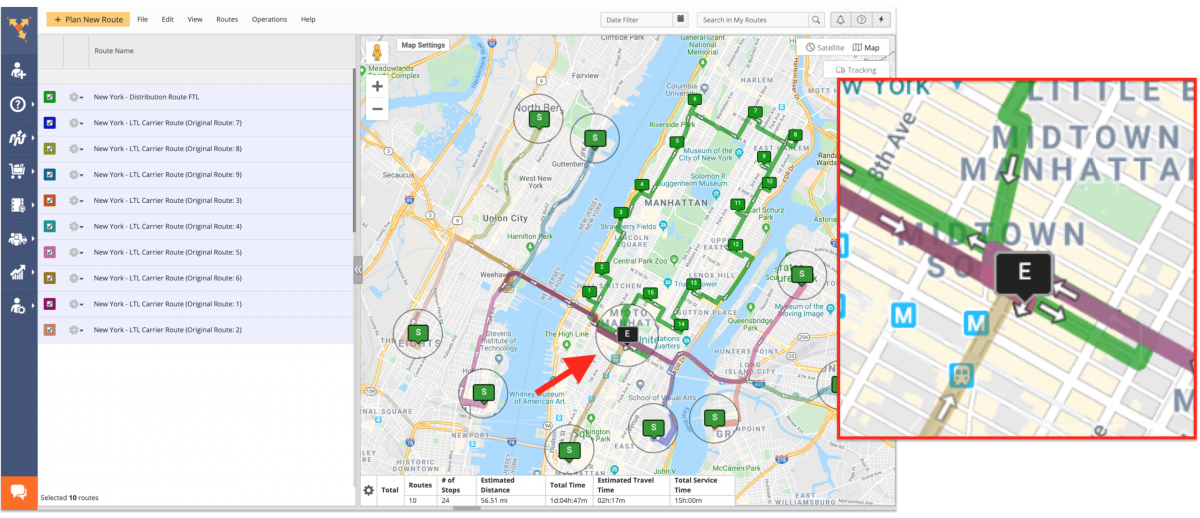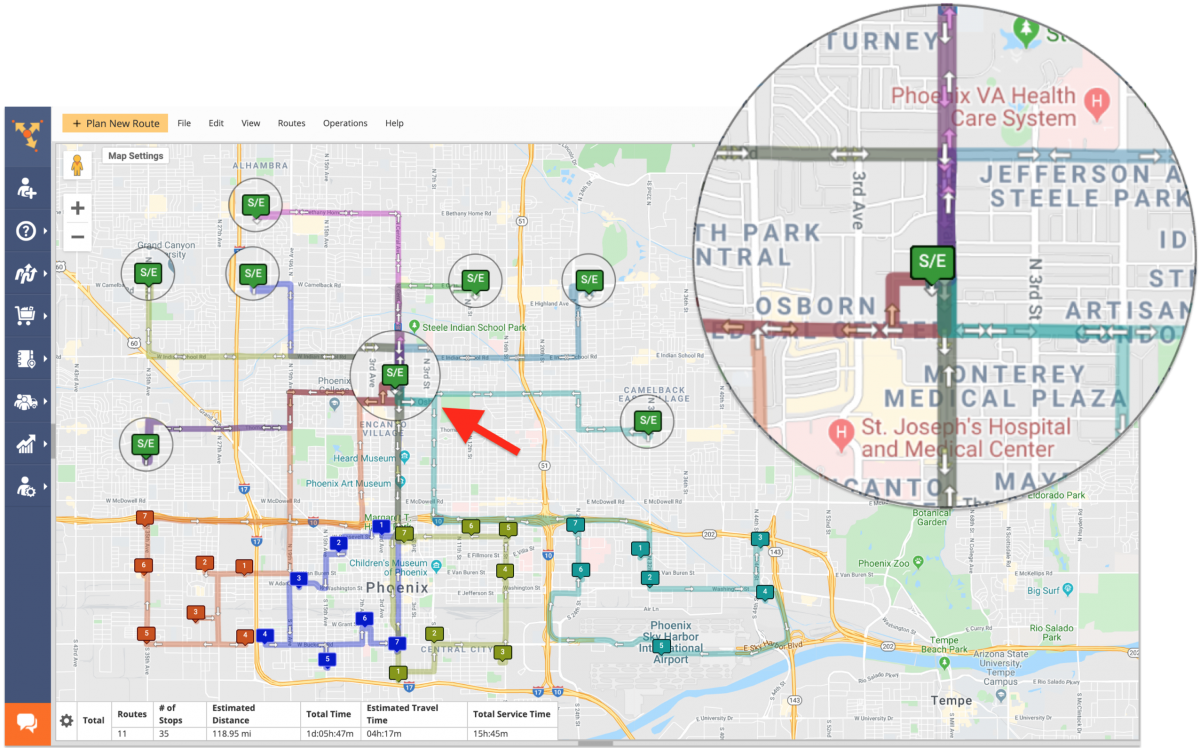Cross-Docking And Transloading Route Optimization
Cross-docking is the practice in logistics that allows various businesses to avoid traditional warehousing practices by unloading inbound shipments from delivery vehicles at the main distribution center, assembling them into final products or sorting them into mixed product pallets, and then loading them on outbound vehicles – all with as little material handling time as possible. For example, your business has 10 warehouses, and you need to deliver 1 item from each warehouse to 100 customers.
Instead of planning 100 routes from each of your 10 warehouse to each customer and delivering 1 item at a time, you can plan 1 route from each warehouse to the main distribution center, assemble mixed product pallets from the received items, and then plan a couple of optimized routes for visiting all customers and delivering mixed product pallets. Cross-docking is a universal logistics practice that can be used by different business types and models, from vehicle manufacturing to grocery delivery.
Moreover, certain groups of goods (i.e., perishable items, high-quality items that don’t need to be checked, pre-tagged and barcoded items that can be scanned, etc.) benefit from cross-docking more than from any other product transportation and handling methods. Thus, many companies of different size use cross-docking for:
- Streamlining their supply chains from the point of origin to end customers or other assembly lines.
- Minimizing the risks of their products being damaged.
- Cutting warehouse and holding expenses by reducing the amount of manual labor, material handling time, electricity usage, government taxes, and more.
With Route4Me’s dynamic routing software, you can streamline your entire supply chain of cross-docking and transloading operations and transactions by planning optimized routes for transporting goods from multiple warehouses or vendors to a single distribution center as efficiently and fast as possible. Once the received goods are assembled into mixed product pallets, you can plan optimized routes with the most optimal stops sequences for distributing the final pallets to end customers, different assembly lines, or any other locations you can find on the map. Depending on the particular needs of your business or unique business model, you can use Route4Me for the following cross-docking types: Manufacturing Cross-Docking involves a central distribution center receiving inbound goods and materials that are required for manufacturing a particular production order. After that, the central distribution center sorts, configures, and assembles the received goods into the products that can be shipped to end customers or other locations (learn how to plan manufacturing cross-docking routes).
Distributor Cross-Docking involves a central distribution center that consolidates inbound products or goods received from multiple vendors into the outbound mixed product pallets. Thus, once each mixed pallet is assembled from the different received product types, it is delivered to the end customer or another production line (learn how to plan distributor cross-docking routes).
Transportation Cross-Docking (TCD) is used for gaining economies of scale by receiving shipments from multiple carriers or suppliers in the less-than-truckload (LTL) and consolidating them into full truckload (FTL) shipments in the distribution center from where they are shipped to end customers (learn how to plan transportation cross-docking routes).
Retail Cross-Docking is used for sorting the products received from different vendors and suppliers into consolidated mixed product pallets that are loaded onto outbound trucks and delivered to different retail stores (learn how to plan retail cross-docking routes).
Visit Route4Me's Marketplace to Check out Associated Modules:
- Operations
Advanced Team Management Add-On
